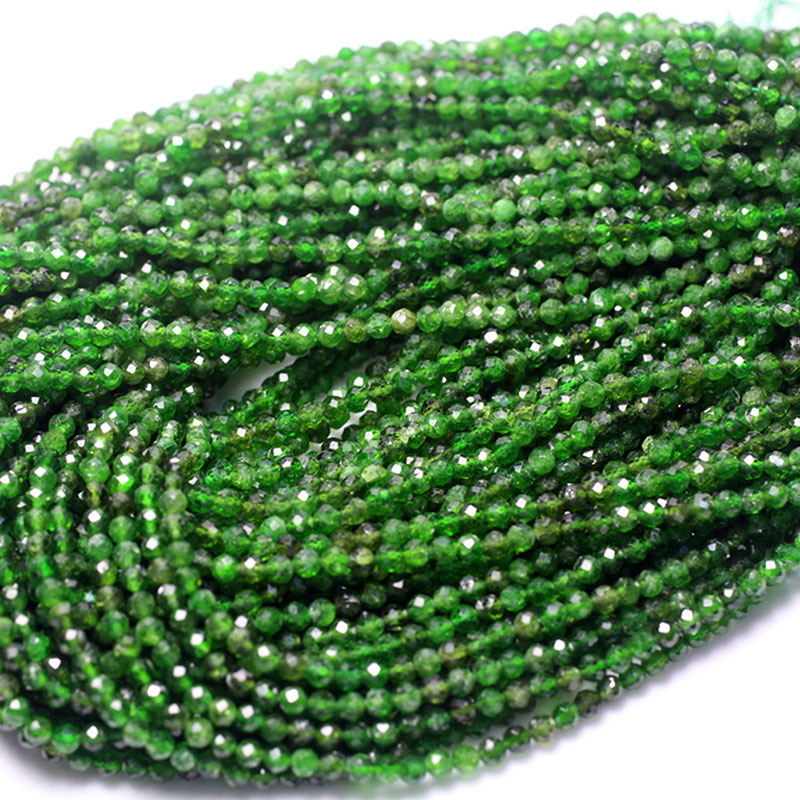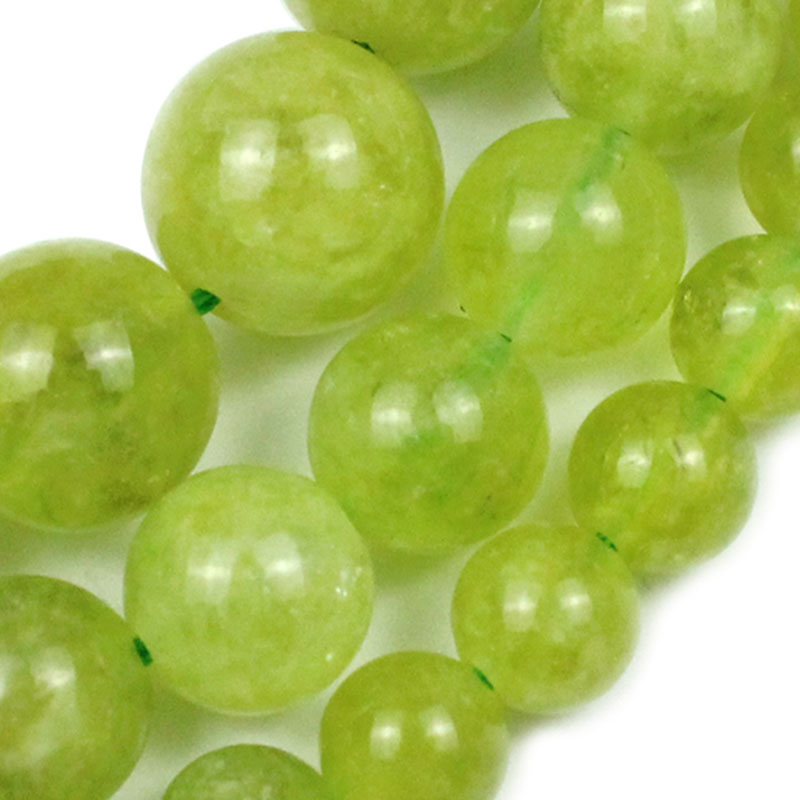Chromium diopside is a kind of gem that has just appeared in the jewelry market in recent years. With its green color and crystal clear quality, it soon won people’s favor and was praised as the sister stone of emerald.
Chromic diopside is called Siberian emerald in Russia. Still, it is actually a close sister of jadeite because jadeite is the main mineral of jadeite, and both jadeite and diopside are clinopyroxene subgroups in the pyroxene family. Still, jadeite is a mineral aggregate, and chromic diopside is a single crystal.
Chromium diopside is mainly produced in South Africa, Russia and Finland.
Physical Properties of Chromium Diopside
Chromium diopside is a kind of diopside containing chromium, with the chemical formula of CaMg [SiO3] 2. It is dark green due to the presence of trace chromium. The brightness of green depends on the content of iron. The higher the iron content, the darker the color.
Other Characteristics:
- Transparent and semi-transparent,
- Glass luster,
- Refractive index of 1.68-1.70,
- Birefringence of 0.027,
- Dispersion of 0.013,
- Polychrome of dark green and light green, green under Long wave ultraviolet light,
- The hardness is 5.5-6.5,
- The density is 3.29g/cm.

Identification Characteristics of Chromium Diopside and Similar Gemstones
The primary identification characteristics of chrome diopside are emerald to dark green color, good transparency, medium refractive index, high birefringence and low dispersion.
Faceted gemstones are characterized by the small to the middle ring, the separation of two rainbows, and the small width of a single rainbow.
Gems and jades similar to chrome diopside mainly include emerald, emerald garnet, Shafule, green tourmaline, peridotite and green glass.
Emerald
Emerald is the most precious gem in the beryl family. It contains trace element chromium and forms a fresh and bright emerald.
Emerald, together with diamonds, rubies, sapphires and Chrysoberyl, are collectively referred to as the world’s five most precious gemstones.
In the international gem market, high-quality emeralds are sometimes more expensive than diamonds.
Emeralds are mainly produced in Colombia, Brazil, Zimbabwe, Tanzania, etc.
The physical characteristics of emeralds, especially their density and polychrome, vary according to their origin. The color of the typical emerald presents a special green color, which is rich and colorful but not flashy.
High-quality emerald is emerald green with a slightly blue tone. The color appears rich, colorful, pure and even, giving a soft and velvety visual effect.
Because emerald is formed in high-temperature hydrothermal ore, most emerald crystals are somewhat defective.
Emerald is brittle and has many cracks, so it is often processed into octahedral ladder shape, also known as emerald shape, unlike diamonds, rubies and sapphires, which are mostly processed into faceted shape.
This carving type can fully display the beautiful color of emerald, while removing the four corners, which is convenient for inlaying more firmly and minimizing the loss of brittleness.
Demantoite
Demantoite is a rare variety of chromic Andradite, which mainly occurs in the contact metamorphic belt of ultrabasic rocks.
The color ranges from light green, yellowish-green to emerald green. The Demantoite has a very high refractive index, a higher dispersion value than diamonds, and a super luster.
It is particularly rich in fire colors, but the particles are generally small. Gems more than 2 carats are very rare. The quality of Demantoite from the Biral Mountains in Russia is the best and is also the main source of Demantoite.
It usually contains asbestos fiber inclusions in a radial form, commonly known as “horsetail,” which is very unique. Other producing areas include Italy, Germany, Namibia, Kenya, etc.
Tsavorite
Tsavorite is a member of the large family of garnets. In addition to its gorgeous and noble color like emerald, it also has a high purity and gloss that emerald does not have, because it has an incomparable high refractive index and fire color, and does not contain so much content in the inclusions as emerald.
Verdelite
Verdelite is a colorful gem with various colors. As one of the tourmaline family, Verdelite is not very prominent, and its main producing areas are Brazil, Sri Lanka and Madagascar.
The hardness of Verdelite is similar to that of emerald, but the price of Verdelite and emerald is much lower at the same high quality.
From the naked eye, Verdelite and emerald have obvious differences in these aspects:
- Emerald is more green than Verdelite and has a more vivid light sense;
- Emerald inclusions are more than Verdelite ;
- Emerald is generally cut in emerald (square) style, while Verdelite is cut in various shapes.
Peridot

Peridot is a kind of magnesium iron nitrate mineral, belonging to the orthorhombic system, with a refractive index of 1.654~1.690 and a birefringence difference of 0.036.
Looking inside, the edges of the bottom facet become overlapping double images because of the high birefringence difference.
- The dispersion index is 0.020,
- the relative density is 3.27 to 3.48,
- the hardness is 6.5 to 7.
In addition to the typical yellowish green, Peridot has other colors, such as colorless, yellow or brown, which is due to the relationship between magnesium and iron, and brown is the result of the oxidation of yellowish green iron Peridot.
Difference between chrome diopside and emerald.
The double rainbow of Chromium diopside is separated, while that of emerald has part overlapping.
Difference between chrome diopside and Demantoite, Tsavorite and green glass.
Chromium diopside is heterogeneous body, while emerald garnet, Tsavorite and green glass are homogeneous bodies.
Difference between chrome diopside and Verdelite.
The double rainbow of Chromium diopside is separation, while that of Verdelite is close proximity.
Difference between chrome diopside and Peridot.
The color of Chromium diopside is emerald to dark-green, and is light green fluorescence under the ultraviolet lamp, while The color of Peridot is yellow-green and non-fluorescence under the ultraviolet lamp.
Efficacy of Chromium diopside
- Nourish the body: Nourishing the body is one of the main functions of Chromium diopside. Natural ores such as diopside contain many minerals and trace elements that the body will gradually absorb when wearing diopside.
- Relieve emotion: Easing emotions, because its color is from blue-green to yellowish green, and it also has purple, yellow, colorless, white and other colors. Its color is fresh and bright, which can help relieve tension and anxiety visually.
- Strength courage: Chromium diopside is a symbol of courage and strength. It is often used as an amulet to ward off evil spirits in the East.
- Adjust blood pressure: It can adjust blood pressure in both directions. People with hypertension can lower their blood pressure by using it to enhance and improve the body’s immune function and improve the body’s resistance to disease.
Evaluation Value of Chromium Diopside
The 4C principle of color, clarity, weight and cutting is also suitable for evaluating the value of chrome diopside.
If it has high clarity and good cutting, color and weight become the primary basis for evaluation.
The emerald green with low iron content is closest to the emerald, and its value is higher than the dark green. The weight of chrome diopside in the market is generally less than 3 carats, and 3-10 carats are relatively rare, while more than 10 carats are extremely rare, and the price is relatively high.
Conclusion:
Chromium diopside is a chromium-containing diopside variety (Cr2O3). Crystals with a size greater than 3mm can be used as gemstones.
It mainly occurs in kimberlite and spinel lherzolite. The famous places of origin are Ottokumu in Finland, Urals in Russia and Myanmar. Some chrome diopsides from Myanmar have cat’s eye effect.
